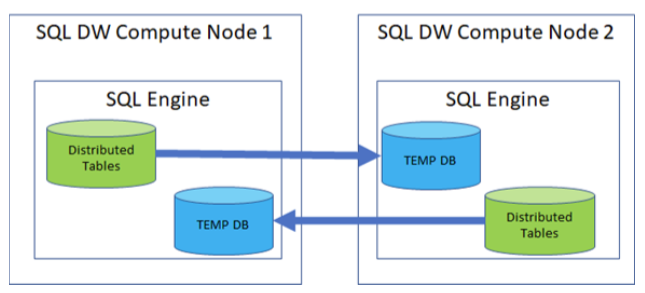Does Brexit mean blockchain? The UK government has published a whitepaper — some two years in the baking — where it sets out its fuzzy thinking in an attempt to move beyond two years of Brexit fudge by squashing its warring factions behind a compromise customs arrangement to try to live up to its promise of a “future relationship with the European Union”, i.e. without lashings of fudge.
Unfortunately though, for citizen sanity, business reality, and, well, anyone not happy gambling everything on fantastically functional systems that don’t exist yet, it’s still leaning heavily on undefined technological solutions to try to make its alternative customs arrangement fly. (Or, more realistically, limp towards another accusation of magical thinking by the EU.)
Instead of the current Customs Union, which the UK is part of as a member of the EU, the government is proposing entering into what it calls a “facilitated customs arrangement” (FCA) with the EU — which it wants to cover goods (services would not be included in this arrangement).
It fondly imagines this FCA would “remove the need for customs checks and controls between the UK and the EU as if in a combined customs territory, while enabling the UK to control tariffs for its own trade with the rest of the world and ensure businesses pay the right tariff”.
So, in other words, this is the desperately sought for ‘frictionless’ Brexit border outside the Custom Unions — in order that the UK can go around the world trying to strike its own trade deals (which it cannot do if it stays inside the EU’s Customs Union).
The UK plan to circle this square is for it to apply tariffs on all imported goods at the border, rather than EU tariffs — but then track the goods and, if they subsequently get sent to the EU, apply the EU tariff — and send the money where it’s then due (i.e. to the EU). Honest!
Which raises the obvious question of how goods will be effectively tracked in order for tariffs to be correctly calculated and/or remitted.
The risk of customs fraud draining EU (and/or indeed UK) coffers via a badly implemented version of this arrangement, or probably just by this arrangement, is clear.
“The UK recognises that the rules and processes governing eligibility for repayment, including risk profiling and effectively targeted audit and assurance activity, must be sufficiently robust to ensure the mechanism cannot be used to improperly evade EU or UK tariffs and duties, through methods such as re-exporting of goods from the UK to the EU, or vice versa,” the government itself admits in the whitepaper.
Meanwhile, there’s no suggestion that EU negotiators have any intention of accepting its proposal. Even though it took the UK two years to come up with. But here we all still are. (Well, minus a few cabinet ministers.)
The UK’s great white hope is that cutting-edge technologies will save the day. Along with it agreeing to abide by a “common rule book” and the Union Customs Code.
But of course just saying you have a rulebook and not checking and enforcing those rules isn’t any good at all, as Facebook has been finding out lately.
And so technology.
The whitepaper specifically mentions the possibility of “exploring how machine learning and artificial intelligence could allow traders to automate the collection and submission of data required for customs declarations” — i.e. to try to streamline the repayment mechanism that this FCA idea demands.
But the whitepaper’s suggestive techno-solutioneering goes further — describing something that sounds suspiciously like a blockchain.
Or, actually, lots and lots and lots of blockchains. Implying that, at the very margins of ministerial thought processes, someone, somewhere in Whitehall is dreaming that Brexit means blockchain, all the way down.
The buzzword is not explicitly mentioned in the government’s whitepaper. But what else could a secure, shareable “chain of transactions” be referring to… 
It writes:
This could also include exploring how allowing data sharing across borders, including potentially the storing of the entire chain of transactions for each goods consignment, while enabling that data to be shared securely between traders and across relevant government departments, could reduce the need for repeated input of the same data, and help to combat import and export fraud.
So there you have it. Brexit could mean blockchains at the border, immutably ledgering every little thing that passes into and out of the UK, forever and ever, until crypto amen.
Assuming, that is, the goverment’s FCA idea doesn’t get slung back towards the English Channel stat by an immutable EU.
But as we wait for probable rejection of the latest Brexit hash, are there any crypto startups out there who reckon they have what it takes to put Brexit on the blockchain?
We’re all ears. Ideas in the comments pls. We’ll fwd anything that sounds even a satoshi baked straight to DExEU — because they’re clearly in need of every little bit and byte of help they can get to try and make something — anything, please! — stick.
Alternatively, perhaps this is a job for Elon Musk? We hear he’s good at making stuff that can pass through incredibly bounded and contorted spaces. And Brexit most definitely means that.





